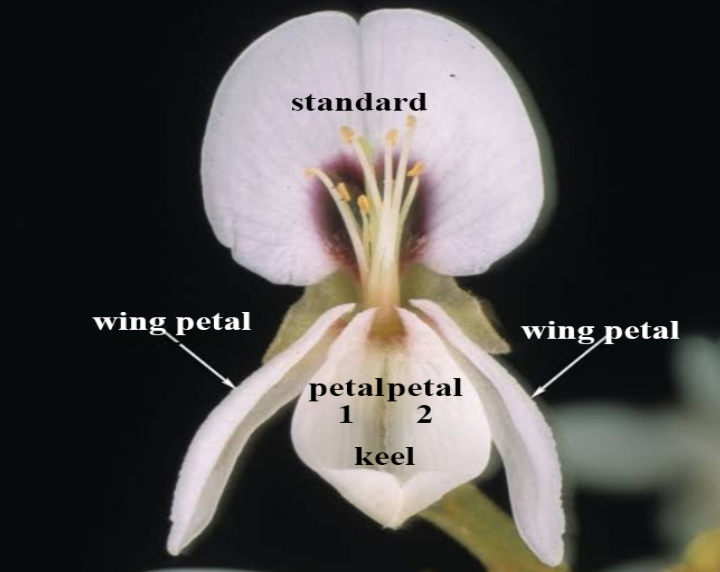
Keel is the characteristic of the flower-
A. Beans
B. Cassia
C. Gulmohar
D. Calotropis
Answer
441.6k+ views
Hint: It is an innermost fused petal, a characteristic feature of the flower of family Papilionaceae.
Complete answer:
The keel is the petal, where the bottom two petals, below the wings, in flowers of the family Papilionaceae of the flowering plant, sometimes they join to form a structure whose shape also resembles the keel of a boat.
The keel is generally found in the flowers of beans, peas, grams, etc. of the family Papilionaceae.
Additional information:
- The flower of the family Papilionaceae has a butterfly-shaped corolla.
- The outermost petals of these flowers are the largest and are called vexillum or standard.
- The two anterior petals are called keel which fused enclosing stamens and carpels.
- The keel is the innermost petal, also called as Carina.
- These flowers have generally vexillary (overlapping) aestivation (arrangement of flower parts).
- Keel generally keeps the reproductive organs hidden away from insects.
- Petals are modified leaves that surround the reproductive parts of the flowers. Together all the petals of a flower are called a corolla.
- Petals are usually accompanied by another set of special leaves called sepals.
- These sepals collectively form the calyx and lie just below the corolla.
- Petals are often brightly colored or unusually shaped to attract pollinators.
So, the correct answer is Beans.

Note: Keel occurs in humans also which is called a sagittal keel. It is a thickening of part or all of the midline of the frontal bone, or parietal bone where they meet along the sagittal suture, or on both bones.
Complete answer:
The keel is the petal, where the bottom two petals, below the wings, in flowers of the family Papilionaceae of the flowering plant, sometimes they join to form a structure whose shape also resembles the keel of a boat.
The keel is generally found in the flowers of beans, peas, grams, etc. of the family Papilionaceae.
Additional information:
- The flower of the family Papilionaceae has a butterfly-shaped corolla.
- The outermost petals of these flowers are the largest and are called vexillum or standard.
- The two anterior petals are called keel which fused enclosing stamens and carpels.
- The keel is the innermost petal, also called as Carina.
- These flowers have generally vexillary (overlapping) aestivation (arrangement of flower parts).
- Keel generally keeps the reproductive organs hidden away from insects.
- Petals are modified leaves that surround the reproductive parts of the flowers. Together all the petals of a flower are called a corolla.
- Petals are usually accompanied by another set of special leaves called sepals.
- These sepals collectively form the calyx and lie just below the corolla.
- Petals are often brightly colored or unusually shaped to attract pollinators.
So, the correct answer is Beans.

Note: Keel occurs in humans also which is called a sagittal keel. It is a thickening of part or all of the midline of the frontal bone, or parietal bone where they meet along the sagittal suture, or on both bones.
Recently Updated Pages
Master Class 11 Economics: Engaging Questions & Answers for Success

Master Class 11 Business Studies: Engaging Questions & Answers for Success

Master Class 11 Accountancy: Engaging Questions & Answers for Success

Master Class 11 English: Engaging Questions & Answers for Success

Master Class 11 Computer Science: Engaging Questions & Answers for Success

Master Class 11 Maths: Engaging Questions & Answers for Success

Trending doubts
State and prove Bernoullis theorem class 11 physics CBSE

1 ton equals to A 100 kg B 1000 kg C 10 kg D 10000 class 11 physics CBSE

State the laws of reflection of light

One Metric ton is equal to kg A 10000 B 1000 C 100 class 11 physics CBSE

1 Quintal is equal to a 110 kg b 10 kg c 100kg d 1000 class 11 physics CBSE

Difference Between Prokaryotic Cells and Eukaryotic Cells




